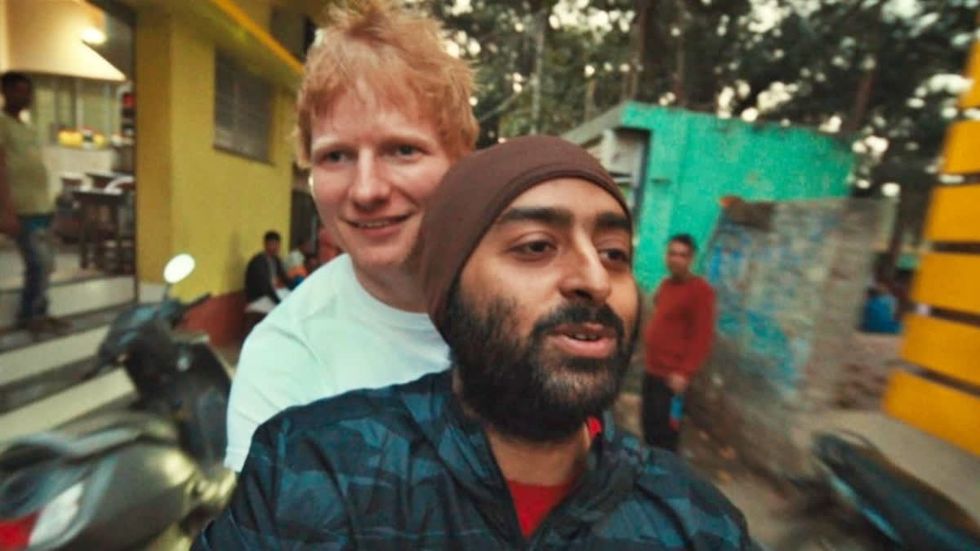ONE of the biggest threats humanity faces is climate change due to our own human actions. Sustainability is achieved when we give back at least as much as we take from the Earth's systems (comprising carbon, water, nitrogen, phosphorus, and sulphur cycles, to name a few). However, our current ways of living, along with our interactions with other life forms on Earth, are far from sustainable.
We need to align our actions with an understanding of the Earth’s planetary boundaries. The more advanced a society is, the more disconnected it becomes from nature. It is time to re-examine our actions to alleviate the self-inflicted suffering that some communities around the globe have already begun to face.
Determining the right course of action and how to apply it in the modern world of technology and automation is where my interest lies. This is where our shastras provide guidance on what constitutes 'right actions' based on dharma, also offering context for human values. Our rishis have left us a wealth of knowledge and wisdom rooted in science and metaphysics, distilled into the Bhagavad Gita through the dialogue between Krishna and Arjuna on the battlefield of Kurukshetra. Arjuna became despondent when faced with the challenge of killing his own kinsmen, and that’s when Krishna explained the importance of upholding dharma through right action.
Human values model
To apply such ideals from the shastras for making valued judgements, I have developed a framework for analysing our knowledge, thoughts, and actions based on Jnana Yoga, Raja Yoga, and Karma Yoga – any of which can lead one to spirituality. I have used the classical X-Y graphical plot to build the model on two fundamental values: 'Love' and 'Truth,' linked to the right (intuitive) and left (logical) sides of our brain, respectively, as defined below.
The approach and applications have been illustrated in the following two videos:
These videos first show how we can use the graphical approach to represent the meaning of values. The two core values of love and truth are then linked to other positive and negative values at three levels: Knowledge, Thought, and Action, as shown below.
Depictions of values using L&T plots at three levelsThe above figure shows the two core values of love and truth, alongside three ideal values: right conduct at the action level, peace at the thought level, and non-violation at the knowledge level. The Indian Parliamentary Committee on Value Education, in February 1999, identified these same five values as ideal human values. They form the core of spirituality, represented by major religions, and allow us to go beyond them to see unity in diversity. You will note that I am using the term 'non-violation' rather than 'non-violence,' as the latter cannot be followed in its absolute sense – even vegans need to destroy plants to sustain their diet.
The videos illustrate (with examples) how alignment of values at the three levels can be measured and how misalignment between different levels of knowledge, thought, and action can lead to tension, stress, and anxiety in us.
I have set out a framework to discuss values and their deeper meanings. It is based on broad Hindu philosophy and the Sathya Sai Education in Human Values programme, which left a lasting impression on me after I met Sri Sathya Sai Baba in 1980.
Dr Prabodh MistryThe structure of the values lends itself to mathematical modelling and is being considered in wide-ranging applications, such as teaching values, cognitive behavioural therapy (CBT), gaming, programming ethics in robots, and aiding decisions in autonomous systems like driverless cars. It can also be extended to business ethics to assess their environmental, social, and governance (ESG) impact, media reporting, domestic and international politics, and much more.
In all these cases, it is important to apply values and act correctly, as the Hindu dharma dictum (धर्मो रक्षति रक्षितः) states: "Dharma protects its protector. It destroys its destroyer."
Dr Prabodh Mistry (prabodh.mistry@gmail.com) qualified as a biochemical engineer, with a PhD from Imperial College London in 1985, and has a deep interest in applying human values in education, science, and technology. He works as an environmental consultant and teaches mathematics to local students in his spare time.






 LONDON, ENGLAND - JUNE 22: Baroness Floella Benjamin speaks during the unveiling of the National Windrush Monument at Waterloo Station on June 22, 2022 in London, England. The photograph in the background is by Howard Grey. (Photo by John Sibley - WPA Pool/Getty Images)
LONDON, ENGLAND - JUNE 22: Baroness Floella Benjamin speaks during the unveiling of the National Windrush Monument at Waterloo Station on June 22, 2022 in London, England. The photograph in the background is by Howard Grey. (Photo by John Sibley - WPA Pool/Getty Images)









 Ed Sheeran and Arijit Singh
Ed Sheeran and Arijit Singh Aziz Ansari’s Hollywood comedy ‘Good Fortune’
Aziz Ansari’s Hollywood comedy ‘Good Fortune’ Punjabi cinema’s power-packed star cast returns in ‘Sarbala Ji’
Punjabi cinema’s power-packed star cast returns in ‘Sarbala Ji’ Mahira Khan
Mahira Khan ‘Housefull 5’ proves Bollywood is trolling its own audience
‘Housefull 5’ proves Bollywood is trolling its own audience Brilliant indie film ‘Chidiya’
Brilliant indie film ‘Chidiya’  John Abraham
John Abraham Hina Khan and her long-term partner Rocky Jaiswal
Hina Khan and her long-term partner Rocky Jaiswal  Shanaya Kapoor's troubled debut
Shanaya Kapoor's troubled debut Sana Yousuf
Sana Yousuf



 Shraddha Jain
Shraddha Jain Arundhati Roy
Arundhati Roy William Dalrymple and Onjali Q Rauf
William Dalrymple and Onjali Q Rauf Ravie Dubey and Sargun Mehta
Ravie Dubey and Sargun Mehta Money Back Guarantee
Money Back Guarantee Homebound
Homebound Guru Dutt in Chaudhvin Ka Chand
Guru Dutt in Chaudhvin Ka Chand Sarita Choudhury
Sarita Choudhury Detective Sherdi
Detective Sherdi